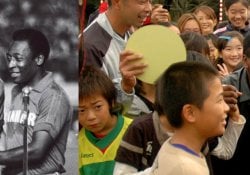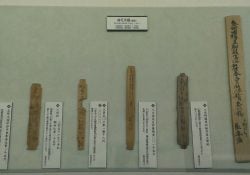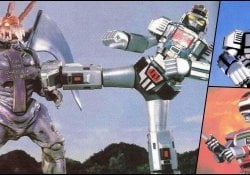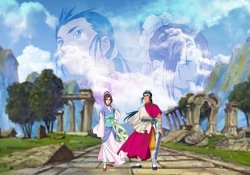Music is a universal art form that transcends cultural and language barriers. Japan, with its rich cultural and musical heritage, is no exception. In this article, we'll explore how to say “music” in Japanese and delve into the various nuances associated with the word and the concept in general. We'll also look at popular music styles in Japan and the history of Japanese music.
Índice de Conteúdo
Música - music
There are two ways to say music in Japanese, they are Ongaku and Uta (song). Of course there are other terms like music import from English (ミュージック). Shall we see in detail each?
「音楽」 Ongaku - Japanese music
The Japanese word for music is 音楽 (Ongaku). Ongaku consists of two Kanji characters: 音 (on), which means "sound" and 楽 (gaku), which means "comfort", "relaxation", "fun" and "music". Together they form the word for music, which encompasses a wide range of styles and musical genres.
Example sentences:
- Ongaku The Kiku (音楽を聴く) - It means "listening to music".
- Ongaku The Kanaderu (音楽を奏でる) - It means "playing music".
- Kanojo wa ongaku ga daisuki desu (彼女は音楽が大好きです) – She loves music.
- Ongaku no shumi wa nan desu ka? (音楽の趣味は何ですか?) – What are your musical interests?
- Kyou wa ongaku konsaato ni ikimasu (今日は音楽コンサートに行きます) – Today I'm going to a music concert.
- Kare wa ongaku sensei desu (彼は音楽先生です) – He is a music teacher.
- Ongaku wa seikatsu ni fukami wo ataemasu (音楽は生活に深みを与えます) - Music gives depth to life.
「歌」 - UTA - Song in Japanese
Uta is another Japanese word for music, but it usually refers specifically to songs with lyrics. Uta can also be used to refer to traditional Japanese songs such as min'yo (民謡) or folk songs.
- Kare no uta wa totemo utsukushii desu (彼の歌はとても美しいです) – His song is very beautiful.
- Uta o utau no ga suki desu ka? (歌を歌うのが好きですか?) – Do you like to sing?
- Kono uta no namae wa nan desu ka? (この歌の名前は何ですか?) – What is the name of this song?
- Uta o Utaimashou Karaoke (カラオケで歌を歌いましょう) – Let's sing karaoke.
- Ano uta wa natsukashii desu (あの歌は懐かしいです) – That song brings back memories.
We also recommend reading: List of Musical Instruments of Japan
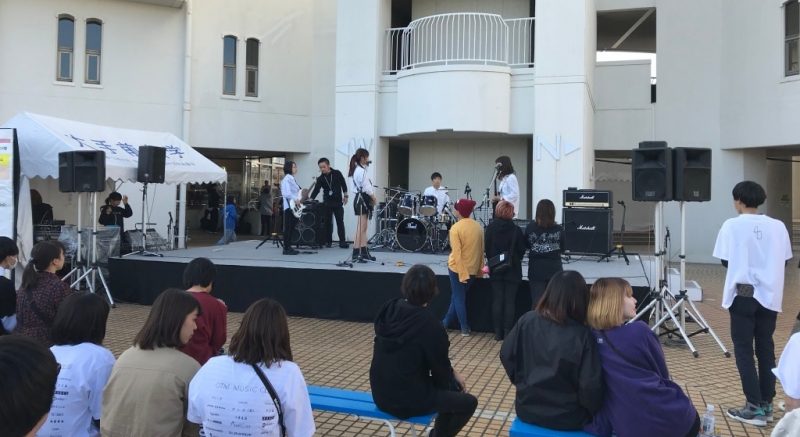
Other ways to say music in Japanese
See below for other ways to refer to songs or specific types of music in Japanese:
Kayou (歌謡): Kayou is a term used to describe folk songs, usually accompanied by traditional Japanese musical instruments such as shamisen and koto. Kayou can also be used to refer to the enka musical genre, which combines elements of traditional Japanese music with Western influences.
Sheet music: Gakufu is the Japanese word for musical score, which is the written representation of the musical notes and other symbols used to play a piece of music.
Otto (音): Oto means sound in Japanese and can be used to describe any type of sound, including musical sounds. However, oto is not specifically synonymous with music, but rather a more general term.
Hougaku (邦楽): Japanese traditional music: This word combines "Hou" (邦), which means "homeland" or "nation" with "gaku" (楽) to refer to traditional Japanese music.
Yougaku (洋楽): Foreign music: Here, "You" (洋) means "foreigner" or "western", and "gaku" (楽) refers to music. Thus, Yougaku describes western or foreign music in general.
Gendai ongaku (現代音楽): Contemporary music Gendai (現代) means "modern" or "contemporary". Gendai Ongaku refers to contemporary music, which can include a variety of styles and genres.
Karaoke (カラオケ): Karaoke is a popular form of entertainment in Japan where people sing songs, usually accompanied by a pre-recorded instrumental track. The word karaoke is composed of the characters kara (空), which means "empty", and oke (オケ), an abbreviation for "orchestra". In this case, uta is used to refer to the songs that are sung during karaoke sessions.
Anison (アニソン): Anison is an abbreviation of “anime song” and refers to anime theme songs, Japanese animations. These songs are usually accompanied by lyrics and often become popular with fans.
J-Pop (ジェイポップ): This is the abbreviation of "Japanese pop" and refers to the genre of Japanese pop music.
J-Rock (ジェイロック): Similarly, J-Rock is the abbreviation of "Japanese Rock" and refers to the genre of Japanese rock music.
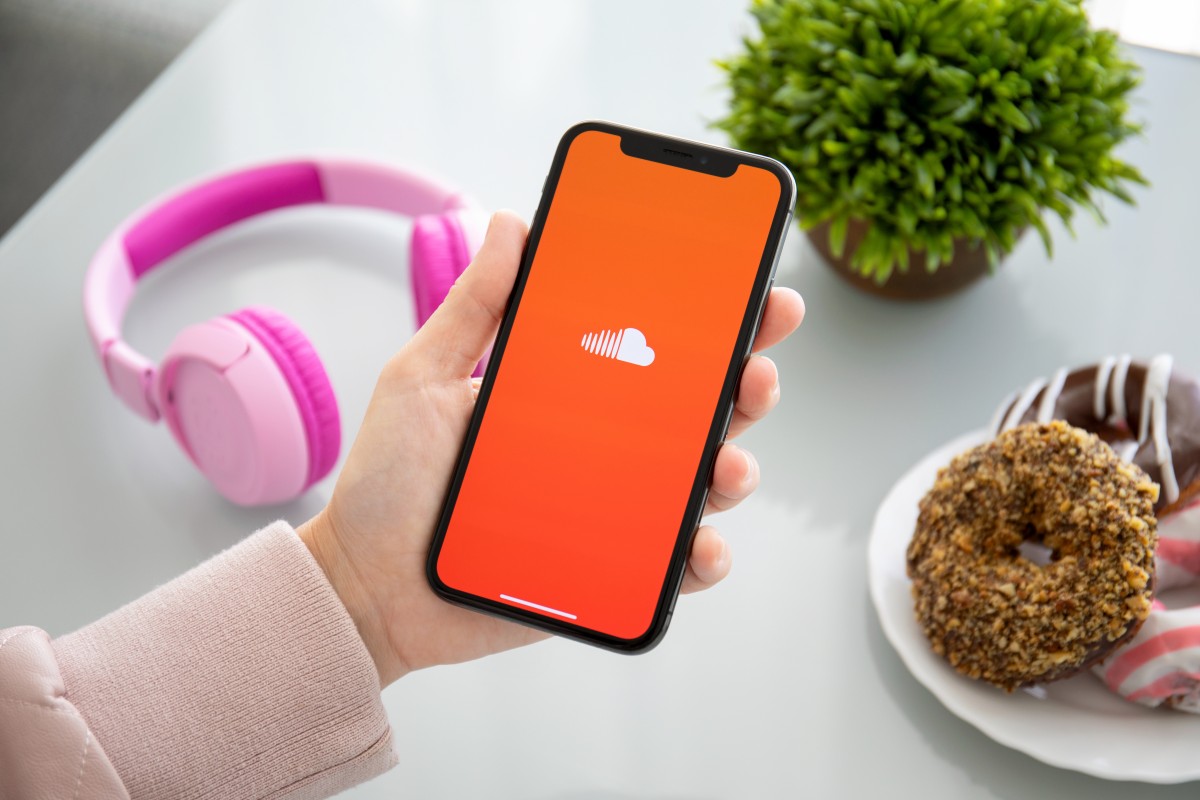
Music related terms
- Ongaku (音楽) - Music
- UTA (歌) - Song
- Gakki (楽器) - Musical Instrument
- Ongakuka (音楽家) - musician
- Kashu (歌手) - Singer
- Gakudan (楽団) - Orchestra or band
- ENSO (演奏) - Performance or presentation
- Koncerto (コンサコンサト) - Concert
- Ongaku Fairu (音楽ファイル) - Music Archive
- Rhythm (リズム) - Rhythm
- Melody (メロディ) - Melody
- Chorus (ココラス) - choir
- Gakufu (楽譜) - Score
- TENOR (テナテナ) - TENOR
- Soprano (ソプラノ) - soprano
Enka Music (演歌)
Enka is a traditional Japanese music genre that combines elements of Japanese music with Western influences. Enka originated in the late 19th century and has developed over time to become one of the most representative genres in Japanese music.
Enka songs are characterized by their soulful melodies and nostalgic lyrics, which often address themes such as love, loss and longing. Enka is also known for its use of traditional Japanese musical instruments such as the shamisen, koto and shakuhachi, in conjunction with Western instruments such as violins, pianos and guitars.
Vocal technique in Enka is unique, with singers using a style called kobushi, which involves modulating the voice to create an emotive and expressive sound. Many Enka artists such as Hibari Misora and Saburo Kitajima have become cultural icons in Japan, representing Japanese identity and tradition.
We recommend reading: Enka Music – History, Trivia and Rankings
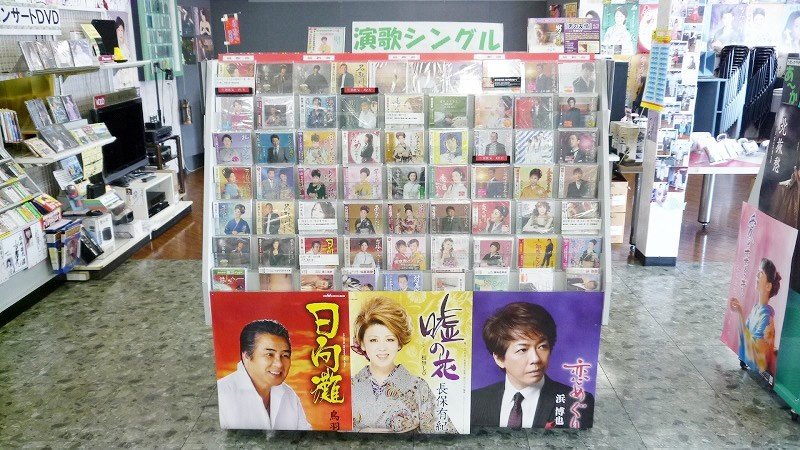
The article is still halfway through, but we recommend also reading:
Japanese Music History
The history of Japanese music can be traced back to the Jomon period (14,000 BC – 300 BC), when the first musical instruments such as flutes and drums were introduced to Japan. However, Japanese music really started to develop during the Nara period (710 – 794 CE), when Chinese culture and art began to influence Japan.
In the Heian period (794 – 1185 AD), court music, known as gagaku, became popular. Gagaku is the oldest Japanese classical music and is still played at ceremonies and formal events. Other musical styles, such as shomyo (Buddhist chant) and sabera (folk songs), also emerged during this period.
During the Edo period (1603 – 1868), Japanese music began to diversify with the development of different styles such as kabuki (Japanese theater) and rakugo (comic storytelling). This period also saw the emergence of the shamisen, a three-stringed instrument similar to a banjo, which played an important role in traditional Japanese music.
I hope you enjoyed this article on how to say song in Japanese. If you liked it, share it and leave your comments and read other articles below:

